Disclosure: this post contains affiliate links, which means I may receive a commission if you click a link and purchase something at no extra cost to you. Please check out our policies page for more details.
for more details.
This one is for all the kids (and parents!) that have fun watching the water go down the bathtub drain and create a cool funnel. That, or you’re like me and enjoyed watching tornadoes form while storm chasing in Oklahoma!
This experiment is a way to demonstrate how a vortex, like water draining in the bathtub or a tornado, forms.
Let’s take this experiment for a spin!
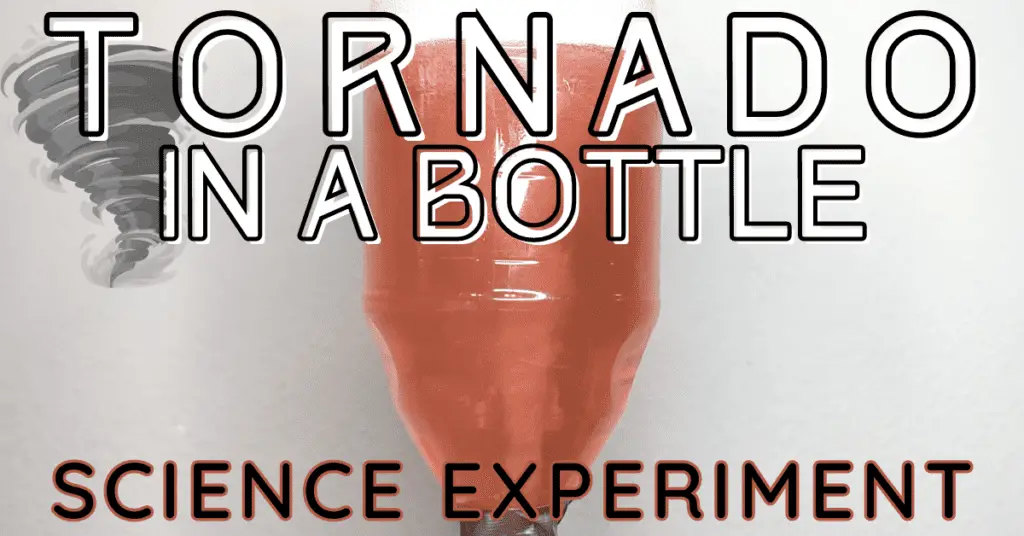
How to make the Tornado in a Bottle science experiment
Supplies you will need
For this experiment, you’ll need the following:
- Two 2-liter bottles, emptied
- Water
- Dish soap

- Duct tape

- Optional: small trinkets that the tornado can swirl around, food coloring
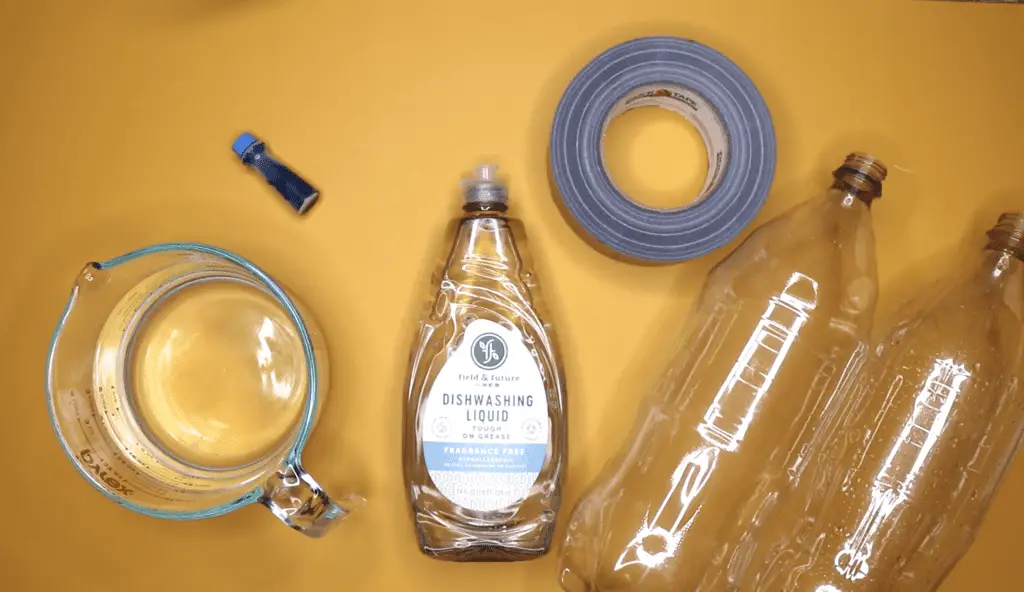
Before you start
The duct tape does not make the experiment completely waterproof. I found that a small amount of water made its way out while we were making a tornado. It may be best to do this experiment over a towel.
Instructions
Here is how to do the Tornado in a Bottle experiment with your toddler:
Step 1: Add water to one of the bottles
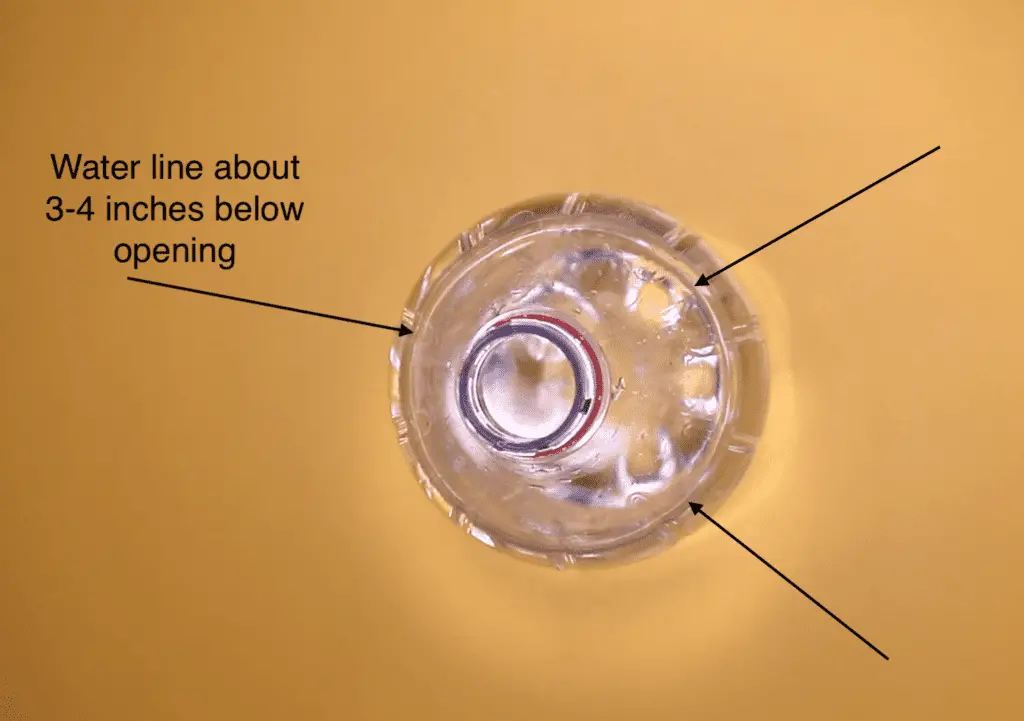
You’ll want to fill the bottle up most of the way, but leave a few inches at the top.
If you want to use food coloring for a visual effect, this would be the time to add it in.
Get your preschooler involved: If you’re using a funnel, see if your child would like to add the water in. Help them pour if they get too rambunctious!
Step 2: Add the dish soap and optional trinkets
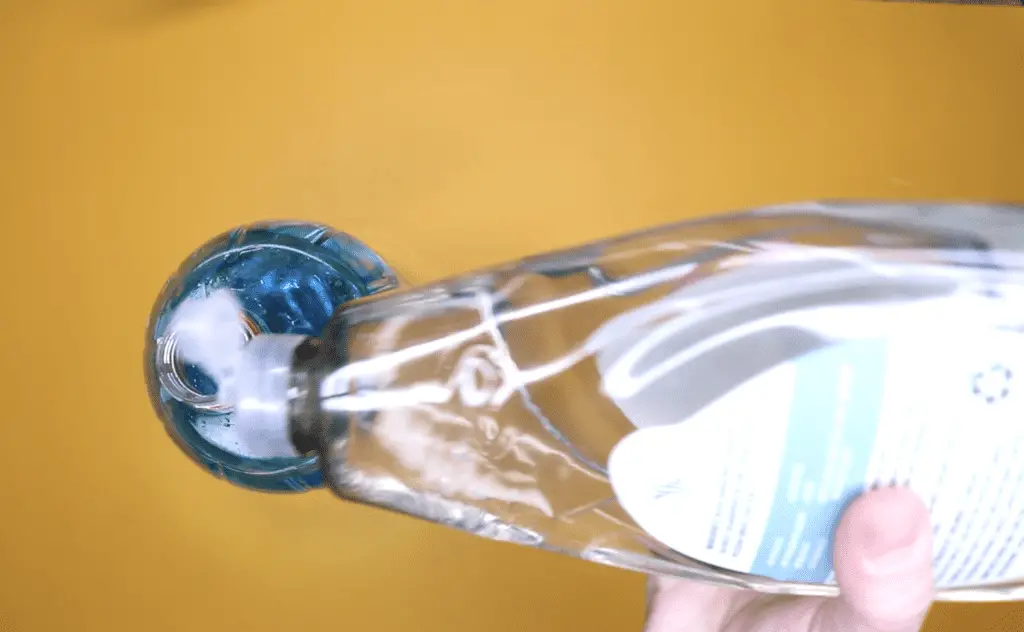
The dish soap is for a visual and not totally necessary to see the vortex. It helps the vortex stand out more and can give the illusion of dirt kicking up around your tornado!
This experiment does not need a lot of dish soap to see the effect. In fact, if you add too much, it could result in too many bubbles and the water not flowing as efficiently.
The trinkets are simply for fun and can start the conversation about how powerful tornadoes can be.
Get your preschooler involved: Have your child add a few pumps of dish soap to the bottle and, if you are using trinkets, have them choose the trinkets.
Step 3: Line up the openings of the bottles and tape them
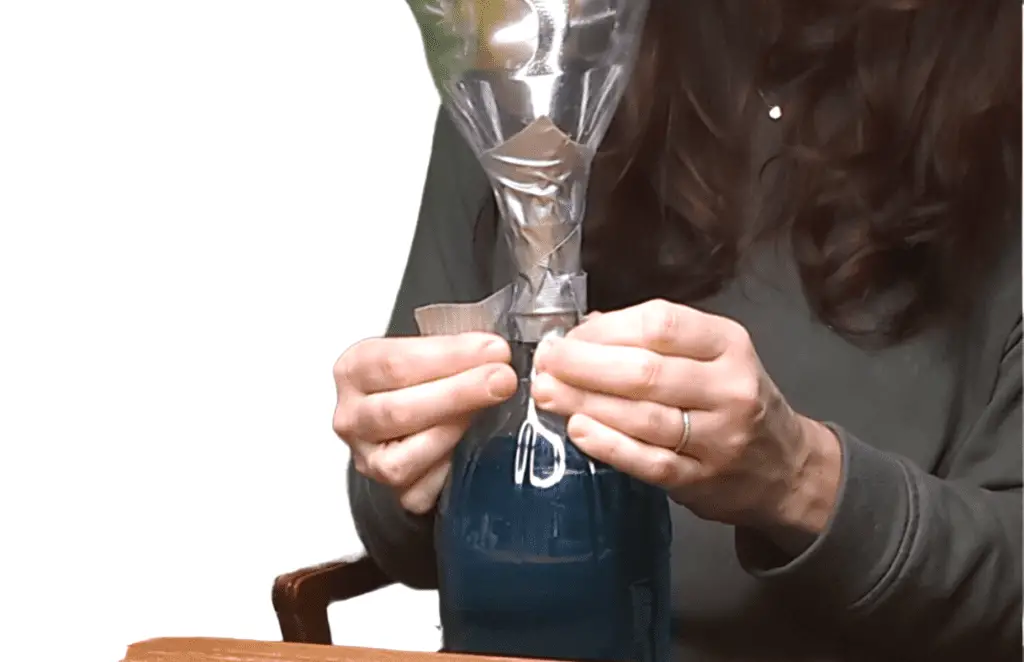
Taking your time with this step is important, as it’s easy to have an accidental spill if things aren’t lined up just right.
I used my fingers to keep the bottle openings aligned as I added more tape. We still ended up with a very minor leak, but doing the experiment on a towel was enough to contain it.
Step 4: Turn the bottle upside-down and initiate the vortex
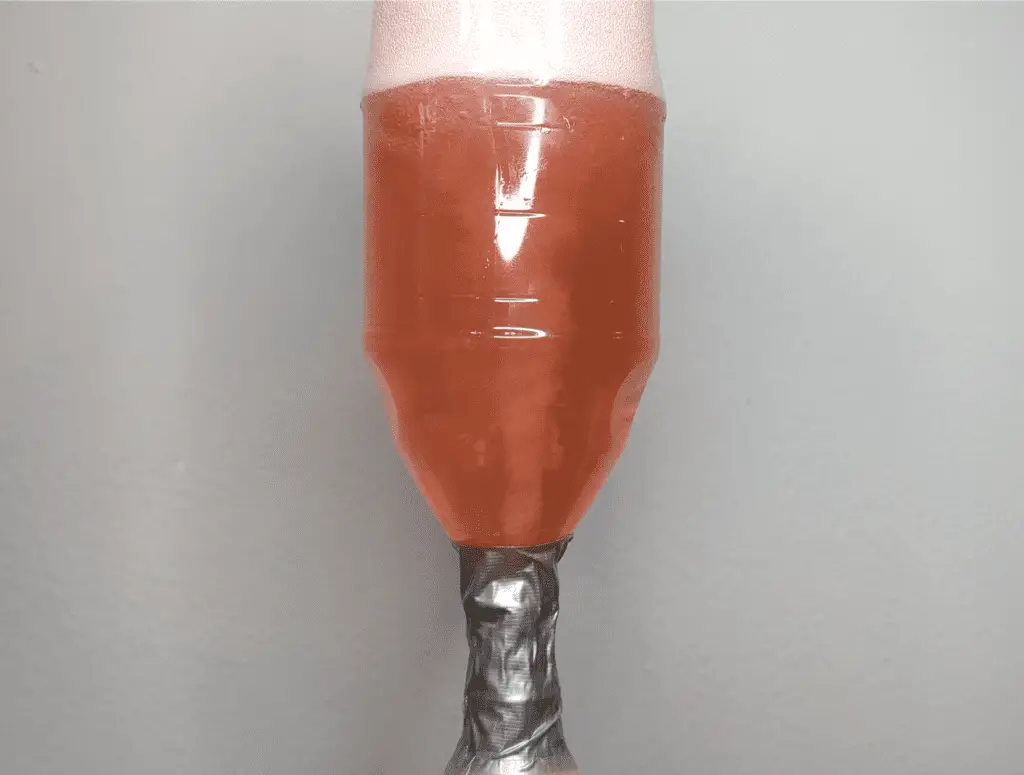
Once you turn the bottle upside-down, give the top bottle a few turns to initiate the spin for the vortex. After, just let the vortex begin and put on a show!
Get your preschooler involved: Let your child try to initiate the vortex by showing them how to turn the top bottle. They may need help the first couple of times.
The science behind the Tornado in a Bottle earth science experiment
This experiment teaches:
- What is a vortex?
- How a vortex forms
- What is happening inside the vortex
How it works
This experiment puts a scientific explanation behind the vortex that forms in the bathtub for your child.
What is a vortex?
A vortex is a mass of fluid with a whirling or circular motion that tends to form a cavity or vacuum in the center of the circle and to draw toward this cavity or vacuum body subject to its action (defined by Merriam-Webster).
Some examples of vortices are:
- Tornadoes, dust devils, hurricanes, waterspouts
- Water flowing down the bathtub drain
- Galaxies
- Stirring your coffee or tea
How a vortex forms
A vortex is formed when a substance circles around an axis point. You can spot them forming when you drain the water from a bathtub, in natural phenomena like tornadoes and hurricanes, and even when you add creamer to your coffee and see little spirals of creamer!
When no other force is acting on a vortex, its rotation (whether it spins clockwise or counterclockwise) is determined by the Coriolis effect .
.
In the case of a tornado, the Coriolis effect does not have a direct impact on the rotation of the tornado, since a tornado is not quite large enough for it to play a part in the rotation. Instead, the supercell that the tornado spawns from is affected by the Coriolis effect, so most tornadoes in the northern hemisphere do rotate counterclockwise.
What is happening inside a vortex
This section is going to get a little technical since it’s not easily explained otherwise!
When a vortex forms, it is moving a substance from one location to another location.
In our experiment, we are moving water from one bottle to another bottle. Since the velocity of the water is greater near the bottleneck (where it is transferring to our other bottle), there is a clear velocity difference between the top of our water and the base.
That velocity difference develops a sheer force inside the vortex, forming a vortex.
More earth science experiments to try out with your child
- Cloud in a jar – make your own cloud to talk about how they form
- Moon sand – create Moon sand as a sensory experience, while learning about our Moon
- Salt dough dinosaur fossils – a lesson in paleontology while creating fossils with toy dinosaurs
FAQ about the Tornado in a Bottle earth science experiment
How do you make a tornado in a bottle with only one bottle?
If you only have one bottle handy, you can still do this vortex science experiment. Using all of the same supplies (of course with just one bottle instead of two) and the bottle cap to replace the tape, you will initiate the vortex by spinning the bottle around in a giant circle several times. The effect will not last as long, but you will still see a vortex.
